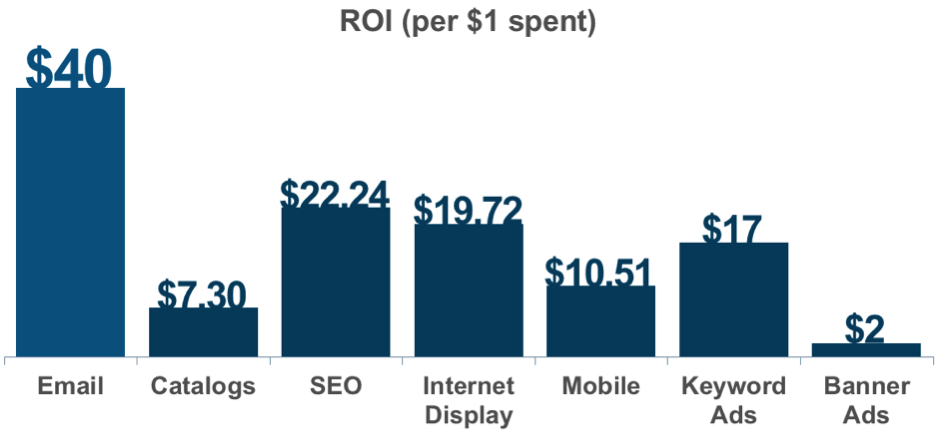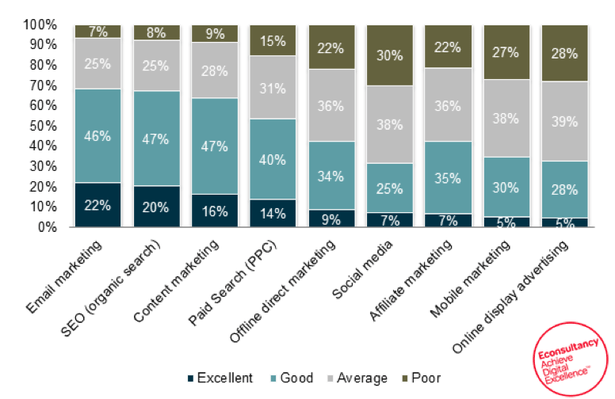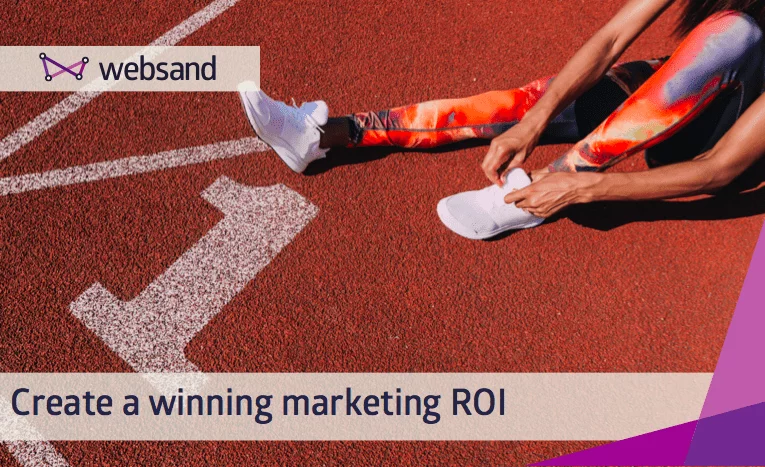Your Marketing ROI
This post is about improving your marketing ROI, and that’s really important because whenever your marketing ROI is growing then you are usually onto a winner.
But the truth is your marketing ROI will be different for each of the channels you use within your marketing activity. It takes time, effort and a willingness to learn to get the magic marketing mix and that takes time, effort and a willingness to learn.
Improving your Marketing ROI
Marketing ROI for PPC will fluctuate, it’s the nature of the beast. It’s fluid, ever changing and although you decide the parameters, the actual activity itself is not really within your control. So focus your PPC efforts on new customer acquisition, take advantage of trends, and make hay while the sun shines!
For your website your marketing ROI should increase. Over time, you’ll get better and understanding how people react to the site and use this it increase your conversions.
Your email marketing ROI should be also increasing. You have control of the delivery, the message and you are able to understand the results. But you can’t send an email without data. So once people have signed up or purchased make email marketing your core marketing channel. It’s your best way to manage, influence and engage with your audience.
Email marketing vs PPC conversion
When you are using your customer data, the only real marketing channel of choice is email marketing.
It’s email that provides you with a direct channel to your customers. A marketing channel that allows you to generate traffic by the bucketloads every time you send an email communication.
That’s a lot of friendly traffic that at a far cheaper rate than PPC traffic.
And don’t forget this friendly traffic has already been ‘qualified’, that’s customers or sign-ups from your site.
So they know who you are and what you do.
From a marketing ROI perspective, that’s really important as your customers are people with a history of a) converting through your website and b) giving you money!
It’s no surprise that when you get email marketing right, it’s the quickest way to generate sales.
Email marketing ROI vs PPC marketing ROI – what the stats say
Cost per conversion is one of the reasons why email has an increasing, and very attractive marketing ROI. Don’t just take our word for it, take a look at the research from within the industry.
Email has an average ROI of $38 for each $1 spent. In 2013, it was $24.93. (source: DMA National Client Email Report 2015)
And here’s how it compares to other marketing channels (according to Adobe).


Of course, according to Econsultancy, most marketers already agree that email is an excellent marketing channel. Furthermore, email is still regarded as the most effective in terms of return on investment. That’s despite the increasing number of marketing options that exist.
Balance your marketing budget between acquisition and retention
Every successful business is based on a plan, and if you are using PPC advertising to generate sales you’ll have lots of marketing plans in play. It’s just the way is works, you’ll probably have a PPC marketing strategy for every product, service or potential search term your audience could use when searching for something that you offer.
In digital terms, PPC should be focused for acquisition, that’s new customers rather than new sales.
PPC is a great way to generate leads both in Google and Social.
But PPC is limited.
- It’s limited to what the potential new customer is searching for.
- Limited to the profile information you can include in your targeting.
- And, limited to your budget – and if you are in a competitive market, budgets can get eaten very very quickly.
That’s the bad news.
The good news is you’ve probably got all the customer information and knowledge you could ever need to drive growth. You have the data, and you have control of it. It’s yours, so you aren’t restricted to a keyword budget.
This magical data is your customer data. The data you collect whenever you make a sale. Of course your prospect sign up information is also really important, but the customer data is where the magic hides.
Use this data to generate growth. To control your customer retention, to build customer loyalty and to nurture signups through to the first sale.
Get the most from your customer data and boost your Marketing ROI
The customer data you collect through every sale and interaction is a huge asset to your business. If you think about it, for adwords, Google is simply monetising the search data they collect everyday. They organise it, and offer it to you. Selling you access to their digital real-estate when someone enters the magic search term that meets your marketing criteria.
With marketing automation using systems such as Websand. You can manage the customer data and interactions you collect.
Use customer segmentation to organise it into the groups that add value to your business, and then communicate to those groups. It’s exactly the same principles as PPC. Manage the data you collect and monetise it.
Use PPC strategies in your Marketing Automation
Using marketing automation you can apply the same data driven strategies you would apply to PPC, but to your own customers.
For example, if you have a keyword strategy around a specific type of product, then you could create a marketing automation campaign targeted at customers who have bought that product or similar products in the past.
You can even be really clever and link it to the time since they last bought that product (or at least you can using Websand), so the customer behaviour is linked to the typical shelf life of your product or service.
Of course, that’s getting really deep. The key to this is getting started by applying very simple PPC strategies to your existing data.
Build your confidence and prove that things really work before getting into the more detailed marketing tactics.
Build your PPC strategies into your email marketing
Time to take a joined up approach to your marketing channels with Websand. Click here to signup for a free 7 day trial, and/or book a slot on our calendar and we’ll help you get started.
